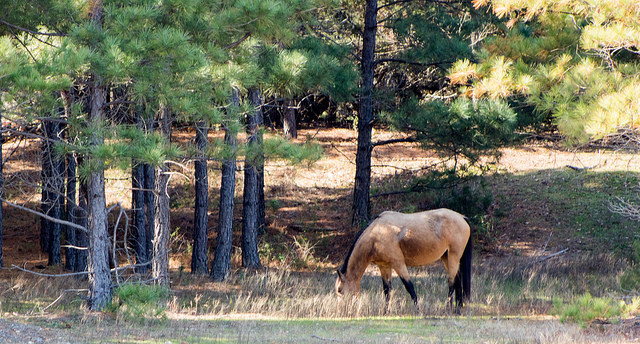Full disclosure: I am a horse girl. I rode my first horse the day I came home from the hospital as a newborn and never looked back. I grew up showing paint and pinto horses, made the 4-H horse project my life, judged horses in college and worked in the equine industry for 12 years before deciding to broaden my agriculture focus to include other facets of the industry that feed and clothe us. Knowing that this job would allow me to promote venues that teach the public about horses was a huge perk.
You probably know about our Trail Riding category. Venues in this category let you rent a horse and follow a guide through the state’s most beautiful places. (Never heard of it? Read about our trail riding destinations here!) However, you may not know that Oklahoma Agritourism has two other very unique venues that allow you to experience the majestic equine. Riding is not an option, but I don’t think you will be disappointed with the experience.
There is no waving wheat and the wind doesn’t really have a plain to sweep, but Southeast Oklahoma has a uniqueness all its own. Pine trees, sandstone, grand views atop climbing peaks and winding roads set the viewing stage for two very different yet incredible herds of wild horses. Yes, WILD horses.
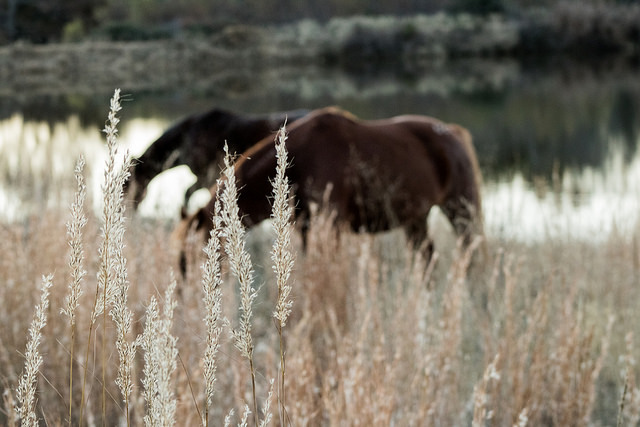
Wild mustangs roam the Southeastern hills at Mowdy Ranch.
One of these venues is Mowdy Ranch Mustangs in Coalgate. The ranch has a rich history in the Choctaw Nation, going all the way back to 1889 when Frank Mowdy drove a herd of cattle north from Texas to find the prime grazing land he had heard of. Today, the current owners, Kit and Clay Mowdy, are raising the fifth generation on the same land, but their livestock looks a little different. A few years ago, the Mowdys entered into an agreement with the Bureau of Land Management to become one of only two eco-sanctuaries for American Mustangs in the United States.
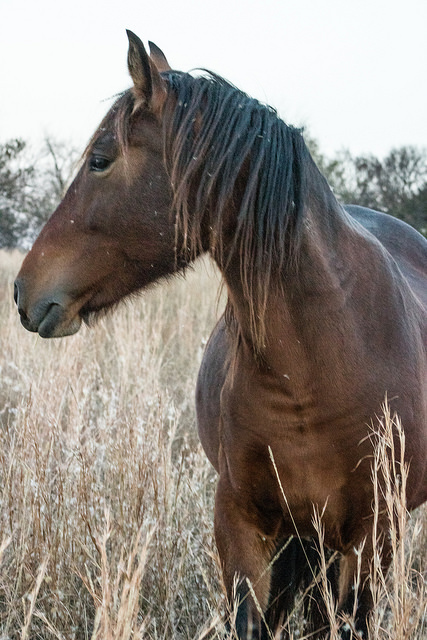
There are four BLM eco-sanctuaries today, but still only one in Oklahoma.
If you know anything about the plight of the American Mustang, you know that their herds are dwindling in the wild due to encroachment of human settlement and declining food sources. The BLM has several programs dedicated to preserving these horses, but these eco-sanctuaries are the only places that allow the public to view the horses in a natural habitat.
At Mowdy Ranch Mustangs, the horses are allowed to roam in wooded hills and open valleys where there is lush grass in the summer and provided hay in the winter. The terrain is rocky in order to keep their hooves in the right condition, and there is ample natural shelter from wind, rain and snow. There are fences, of course, but you won’t see them often, and the food is plentiful enough the horses rarely need to venture far enough to find them.
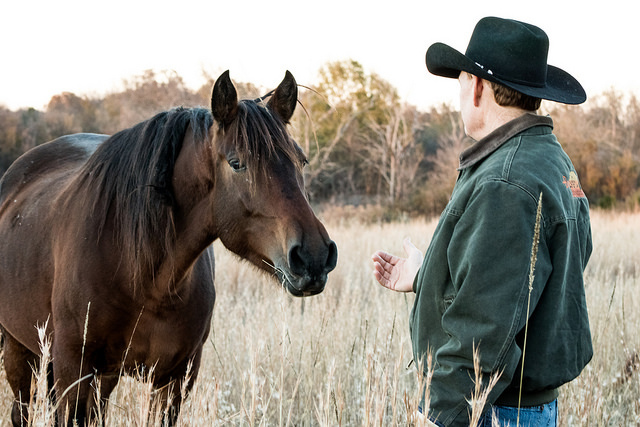
These horses let you get close, but not too close!
It’s hard to describe the beauty of these animals. As a former horse judge, I sometimes struggle because they don’t quite fit the standards of confirmation we use in any of our refined breeds today. However, the vestiges of what we desire are evident when you take the time to look. It’s not hard to see the foundation of the American Quarter Horse in these animals. Sloping shoulders, deep heartgirths and long hips are fairly standard among the herds.
My very favorite thing about watching these herds is finding the anomalies. Feathered legs? Perhaps a farmer abandoned his homestead and left the plow horse to join a wild band 100 years ago. An arched neck and a dished face? Did an imported Arabian somehow escape from the barn and change genetic history? Maybe I make a lot of that up in my head, but maybe not. The Wild West was wild after all.
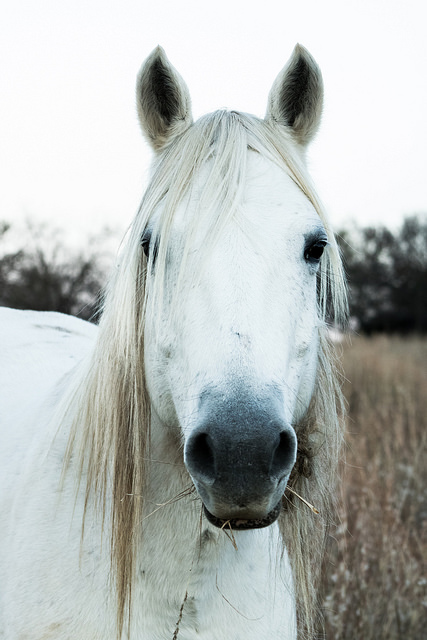
The horses on the Mowdy Ranch are used to the ATV and the hayride that brings tourists into their environment. For the most part, they tolerate humans walking around with cameras, but make no mistake; they are still wild animals and cling tightly to their flight or fight instinct. Not to worry though, the Mowdys know these horses well and will keep you at a safe distance while still allowing you to absorb and capture the true beauty of the wild horse.
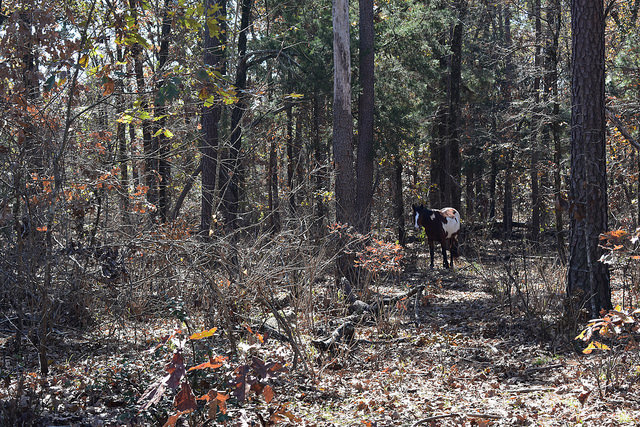
Oklahoma Heritage Horse Sanctuary keeps horses of a different breed, but they're still wild!
For even more horse adventure, you must go a little deeper into the piney hills of southeast Oklahoma to find the Oklahoma Heritage Horse Sanctuary in Antlers. This group is dedicated to preserving the Colonial Spanish Horse, which is the official Heritage Horse of Oklahoma. This herd of horses has a deep and fascinating history involving our state, all of which you can learn from the dedicated volunteers on a tour of the sanctuary.
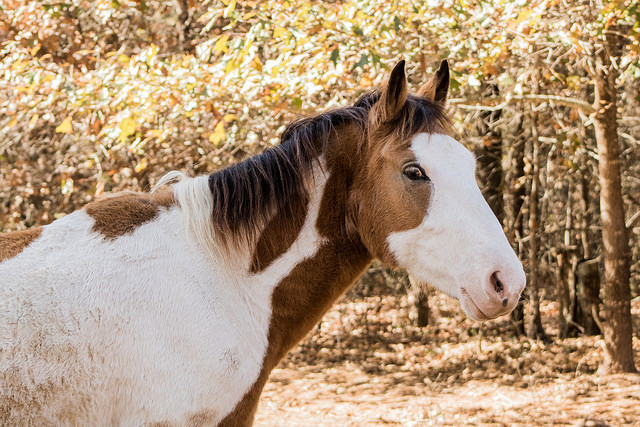
The horses here are quite different than the ones you will encounter at the Mowdy Ranch. Because of their geography, there has not been much outside genetic influence, lending to a much more uniform body type and attitude. These horses are small but sturdy with perfect hooves and a predominance of primitive markings including tiger stripes, barred ears and line backs. It’s no surprise that the Native Americans were enthralled with these animals brought over with conquistadors from Spain in the 1500s. They are quick, agile and stay three or four steps ahead of human thinking.
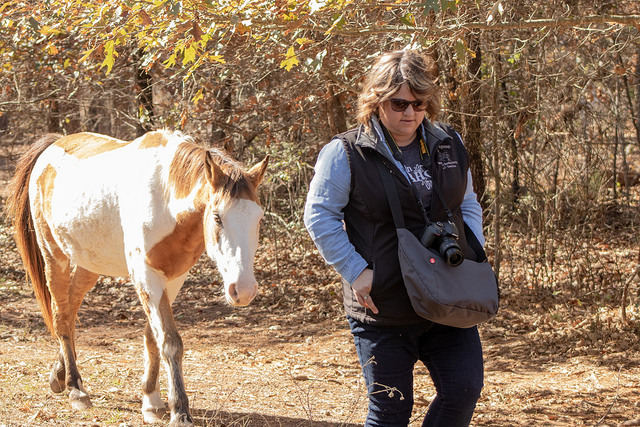
This friendly fellow stayed close until I shut the car door!
Many of these horses have been handled by humans so you are more likely to get a close encounter, even a nuzzle in the right scenario. Even so, photography and observation are the big draws here. Pick a brisk fall morning or a spring sunset and just enjoy being in nature with one of the most spectacular of God’s creatures. Even though that is the opinion of a self-proclaimed horse girl, I don’t think you will be disappointed with this Oklahoma Agritourism equine experience. Click the links below to schedule your visit today!
Oklahoma Heritage Horse Sanctuary
